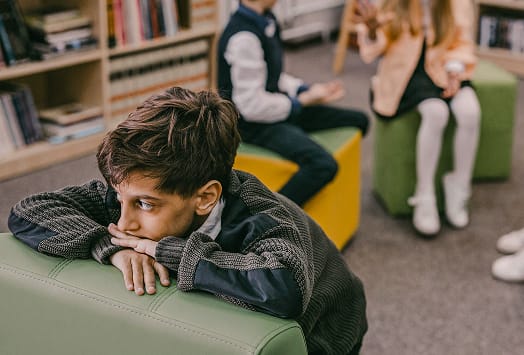Is COVID-19 quarantine giving your family a new meaning for the word "bored?" Are you looking for new skills to keep your children productive and happy? We have the perfect option — sewing classes!
Believe it or not, sewing lessons have numerous benefits for your little ones. Not only do they teach fine motor skills, your children will learn patience, and creativity. Sewing classes are also a great way for children to develop self-confidence and pride in their work.
Even if you aren't a wiz with a needle and thread, there are a few ways to get your young stitcher started. Give them a try before jumping in a sewing class!
Here's what you need to know.
1. Start with easy stitching
One of the best ways to get children to start sewing is to allow them to hand-stitch two pieces of cloth together. Eventually, they'll be able to start getting stitches that are more evenly sized.
Running Stitch
A running stitch is a great way to start. It simply involves running the stitch in and out of the fabric at even intervals.
Backstitch
Once they've got the hang of it, kids can move on to the backstitch. This involves sewing backward and forward at the beginning and end of each seam. Your child can practice with a couple inexpensive pieces of cloth so they won't get frustrated when they're first stitches aren't perfect.
Lazy Daisy Stitch
A lazy daisy stitch is also a great way to teach children how to create a fun pattern using a needle and thread. And a cross-stitch with x-shaped stitches is a fine way to introduce them to embroidery. Spend your first lesson or two practicing simple stitch patterns, and your kids can move on to more serious projects later on.
2. Choose a good time
Real sewing requires patience and concentration, so you may not want to choose a time of day when your little needleworker has other responsibilities on their plate. Sewing during homework time or bedtime could turn your children off to the task.
It's important not to push children to sew when they're tired or frustrated. Once you sense them losing concentration, you can table your projects and pick them back up at a better time.
3. Use the right materials
If there’s one way to get children excited about sewing, it’s with sewing accessories — colorful threads, needles, thimbles, and scissors are such fun tools to work with!
It's okay to give young crafters some choice in terms of colors and even the projects they'll be working on. Just make sure you guide them toward options that they will find enjoyable rather than frustrating.
It's not usually a good idea to scrimp on certain arts and crafts supplies. Blunt scissors or needles, for example, can turn your littles off to sewing for good. The quality of their tools should be decent enough to make their job smooth.
You'll also need a soft fabric that's easy to manipulate but not flimsy. Consider cotton weaves at a medium weight. Fabric is something that you might want to try to save a bit on, as beginning sewing usually involves a few mishaps.
4. Sew on a button
One great starter project for beginner clothiers is teaching them to sew on a button. It's a simple task that has real-world value. Even if your children don't end up becoming master stitchers, you'll save a few bucks on dry-cleaning the next time they lose a button on a sweater.
Young people can learn how to thread a needle, mark the right spots, push the needle through the backside, and secure the thread. It's a great introduction to sewing and likely to result in success.
5. Start with doll clothes
Doll clothes are a great way for kids to start because they require only basic skills, such as seaming and hemming. It's also something your child may be really excited about.
When children sew doll clothes, they follow a simple pattern. They can learn to outline pieces, cut them out, and stitch them together. It's a great introduction to garment-sewing if that's what children eventually want to be able to do.
6. Sew a pillowcase
A pillowcase is another great project for school-aged children. They can pick out a fun pattern and show it off to their friends at sleepovers. It also makes a great present.
All your littles will need are two rectangles of fabric that you can help them pin in place. They can then learn to sew the hem.
Children can hand-stitch a pillow-case or they can use a beginner sewing machine. A sewing machine for kids will be sturdy, easy-to-use, and have basic functioning.
Junior sewing machines also have extra safety functions. If you want your child to use your own machine, you'll need to carefully supervise them.
When your child turns their project inside out, they'll have a fine new pillowcase!
The right way to teach sewing to children
It can be very rewarding to teach sewing to your child. If you choose the right materials and start at the right time, you could be introducing them to a lifelong pastime that will give them great pride and confidence.
Don't stop getting crafty now. For more great parenting project ideas, read our blog today.
















